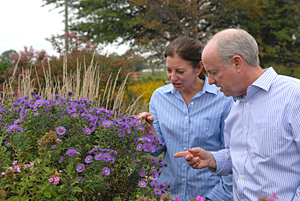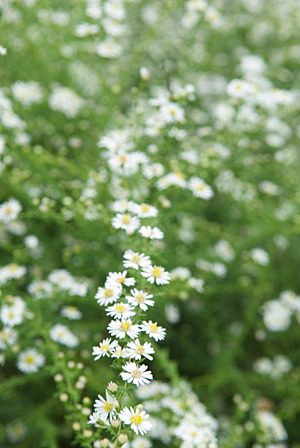ADVERTISEMENT
- Rozovsky wins prestigious NSF Early Career Award
- UD students meet alumni, experience 'closing bell' at NYSE
- Newark Police seek assistance in identifying suspects in robbery
- Rivlin says bipartisan budget action, stronger budget rules key to reversing debt
- Stink bugs shouldn't pose problem until late summer
- Gao to honor Placido Domingo in Washington performance
- Adopt-A-Highway project keeps Lewes road clean
- WVUD's Radiothon fundraiser runs April 1-10
- W.D. Snodgrass Symposium to honor Pulitzer winner
- New guide helps cancer patients manage symptoms
- UD in the News, March 25, 2011
- For the Record, March 25, 2011
- Public opinion expert discusses world views of U.S. in Global Agenda series
- Congressional delegation, dean laud Center for Community Research and Service program
- Center for Political Communication sets symposium on politics, entertainment
- Students work to raise funds, awareness of domestic violence
- Equestrian team wins regional championship in Western riding
- Markell, Harker stress importance of agriculture to Delaware's economy
- Carol A. Ammon MBA Case Competition winners announced
- Prof presents blood-clotting studies at Gordon Research Conference
- Sexual Assault Awareness Month events, programs announced
- Stay connected with Sea Grant, CEOE e-newsletter
- A message to UD regarding the tragedy in Japan
- More News >>
- March 31-May 14: REP stages Neil Simon's 'The Good Doctor'
- April 2: Newark plans annual 'wine and dine'
- April 5: Expert perspective on U.S. health care
- April 5: Comedian Ace Guillen to visit Scrounge
- April 6, May 4: School of Nursing sponsors research lecture series
- April 6-May 4: Confucius Institute presents Chinese Film Series on Wednesdays
- April 6: IPCC's Pachauri to discuss sustainable development in DENIN Dialogue Series
- April 7: 'WVUDstock' radiothon concert announced
- April 8: English Language Institute presents 'Arts in Translation'
- April 9: Green and Healthy Living Expo planned at The Bob
- April 9: Center for Political Communication to host Onion editor
- April 10: Alumni Easter Egg-stravaganza planned
- April 11: CDS session to focus on visual assistive technologies
- April 12: T.J. Stiles to speak at UDLA annual dinner
- April 15, 16: Annual UD push lawnmower tune-up scheduled
- April 15, 16: Master Players series presents iMusic 4, China Magpie
- April 15, 16: Delaware Symphony, UD chorus to perform Mahler work
- April 18: Former NFL Coach Bill Cowher featured in UD Speaks
- April 21-24: Sesame Street Live brings Elmo and friends to The Bob
- April 30: Save the date for Ag Day 2011 at UD
- April 30: Symposium to consider 'Frontiers at the Chemistry-Biology Interface'
- April 30-May 1: Relay for Life set at Delaware Field House
- May 4: Delaware Membrane Protein Symposium announced
- May 5: Northwestern University's Leon Keer to deliver Kerr lecture
- May 7: Women's volleyball team to host second annual Spring Fling
- Through May 3: SPPA announces speakers for 10th annual lecture series
- Through May 4: Global Agenda sees U.S. through others' eyes; World Bank president to speak
- Through May 4: 'Research on Race, Ethnicity, Culture' topic of series
- Through May 9: Black American Studies announces lecture series
- Through May 11: 'Challenges in Jewish Culture' lecture series announced
- Through May 11: Area Studies research featured in speaker series
- Through June 5: 'Andy Warhol: Behind the Camera' on view in Old College Gallery
- Through July 15: 'Bodyscapes' on view at Mechanical Hall Gallery
- More What's Happening >>
- UD calendar >>
- Middle States evaluation team on campus April 5
- Phipps named HR Liaison of the Quarter
- Senior wins iPad for participating in assessment study
- April 19: Procurement Services schedules information sessions
- UD Bookstore announces spring break hours
- HealthyU Wellness Program encourages employees to 'Step into Spring'
- April 8-29: Faculty roundtable series considers student engagement
- GRE is changing; learn more at April 15 info session
- April 30: UD Evening with Blue Rocks set for employees
- Morris Library to be open 24/7 during final exams
- More Campus FYI >>
1:19 p.m., Oct. 4, 2010----University of Delaware entomologist Doug Tallamy has been conducting research studies on the interaction between native plant species and native wildlife since 2000. Author of Bringing Nature Home, which met with critical acclaim in The New York Times and other publications, Tallamy is well aware that most suburban homeowners plant few shrubs and trees, preferring instead vast expanses of grass.
But his latest research, conducted this summer with Jules Bruck, assistant professor of landscape design in the Department of Plant and Soil Sciences in UD's College of Agriculture and Natural Resources, amazed even him. The duo analyzed the composition of 65 suburban yards in New Castle County and Chester County, Pa. They discovered that, on average, homeowners dedicated 92 percent of landscapable areas to lawn.
“I was surprised at how few plants there are in suburbia,” says Tallamy, chair of the Department of Entomology and Wildlife Ecology. “The typical yard is a barren landscape that isn't part of the food web.”
What's worse, he says, is that most of what's planted in suburbia is non-native. In the local yards studied, 78 percent of the plants were alien species. Native plants are necessary to provide food and habitats for local wildlife.
Research shows that people are psychologically more comfortable with empty landscapes, says Tallamy. This mindset is tied into the fact that our earliest ancestors could easily spot predators and other dangers on open terrain.
But saber-toothed tigers aren't lurking outside the palladian windows of our McMansions. So, it's time, says Tallamy, to change the perception of what is an acceptable home landscape.
He doesn't recommend yards brimming with native plants just to be nice to the birds and the butterflies. With every research study he conducts, he's further convinced that healthy local ecosystems are important for people as well as for wildlife.
“Most native insects cannot, or will not, eat alien plants,” explains Tallamy. “When native plants disappear, so, too, do native insects. A land without insects sounds like a gardener's dream; doesn't it? But a land without insects is also a land without most higher forms of life.”
“We invariably take plants and the benefits they provide for granted,” he adds. “Who takes time to think that the oxygen in each breath we take has been produced exclusively by plants?”
Tallamy has enlisted Bruck's help to change attitudes about what constitutes an acceptable home landscape. The duo have begun writing a sequel to Bringing Nature Home that will be a guide to planting with natives in one's local habitat, whether that's the windswept, semi-arid Great Plains or the lush, hilly Piedmont Plateau.
The central question of the book is: How do you design a harmonious garden for people and other things?
“Take what you need and give the rest back to nature,” answers Bruck.
In her own yard, that means some grassy strips for loafing on Adirondack chairs or playing lawn games but also an abundance of native groundcovers, herbaceous perennials, shrubs and trees.
What it doesn't mean is messy, uncontrolled hedgerow, an impenetrable thicket of trees blocking all views or the absence of any lawn.
“No one will accept this new landscape paradigm if it doesn't have curb appeal,” she says.
This isn't theoretical musing but knowledge Bruck has gained from working with residential and commercial landscape clients. In addition to her academic position, she operates Evolution Landscape Design, a consulting firm that does work on Philadelphia's Main Line.
For the most part, people don't want wildflower meadows in their front yards on the moneyed Main Line. Or, here in the Delaware 'burbs, for that matter.
Bruck happens to like the look of home wildflower meadows -- and the fact that they support a variety of wildlife -- but also understands that they aren't right for everyone. Fortunately, there are plenty of other ways to promote biodiversity in the home landscape.
Tallamy believes that Bruck's real-world experience with landscape clients will be a valuable contribution to the sequel to Bringing Nature Home, which, though published three years ago, continues to keep Tallamy on the road with more than 100 public speaking engagements a year.
He acknowledges that his personal approach to his 10-acre yard in Oxford, Pa., is less about curb appeal and more about unabashedly fighting habitat loss.
For example, he's reluctant to pull out saplings, even in odd places, like the black cherry that sprouted right beside his back door.
The day that Tallamy intended to remove the sapling it had tiger swallowtail larvae all over it. Not surprisingly, that black cherry still flourishes there today.
Article by Margo McDonough
Photos by Danielle Quigley




